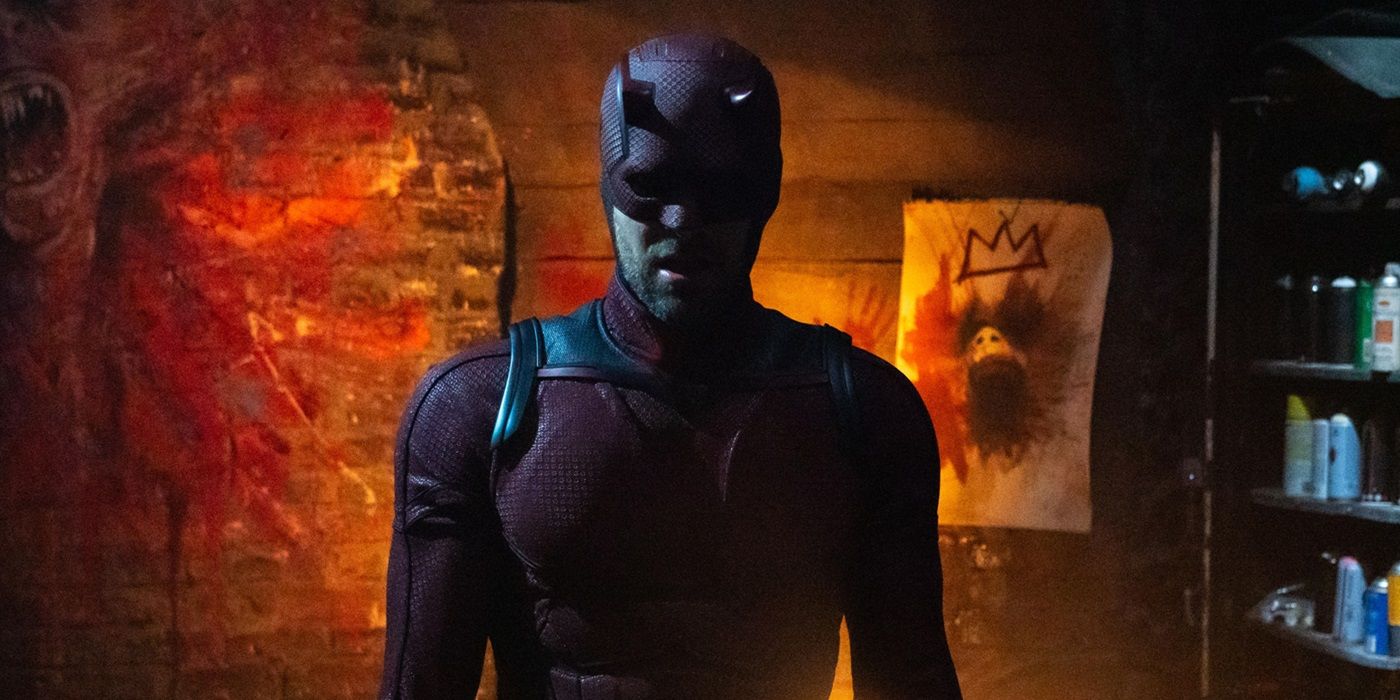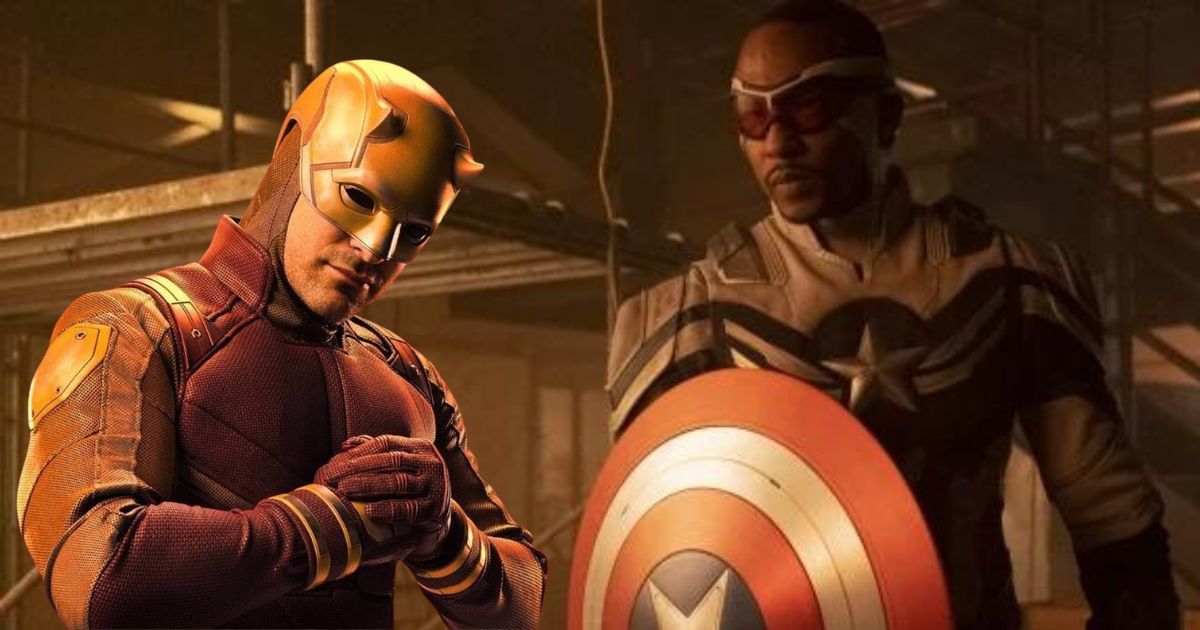A 1980s Marvel live-action movie about Daredevil and Hulk is so obscure that people often assume Ben Affleck was the first actor to portray the Marvel hero in live-action. Rex Smith did it first, starring alongside former Mr. Universe Lou Ferrigno in The Trial of the Incredible Hulk.
The idea for a Daredevil live-action project began as early as the mid-’70s, when David Bowie’s ex-wife Angela Bowie secured the rights to the New York-based superhero and the Black Widow for a limited duration of one year. She had photographer Terry O’Neill take pictures of her as Black Widow and actor Ben Carruthers as Daredevil to pitch the idea to producers, but the project never materialized.
In 1983, ABC also made a Daredevil pilot, but it was never aired. The character would finally debut in the 1989 NBC television movie, which was, in itself, a followup to The Incredible Hulk Returns. The network planned a spinoff series of the film, but this never came to fruition.
Matt Murdock Is Eager to Keep Hulk Out of Prison in ‘The Trial of the Incredible Hulk’
Legal matters, friendship, and villainy all come together in this exuberant yet flawed cinematic feast. There wasn’t much room to maneuver regarding CGI and general special effects in the 1980s, so David Banner (the movie’s version of Bruce Banner) and Hulk are played by two different actors in The Trial of the Incredible Hulk.
In the opening minutes, Banner (portrayed by director Bill Bixby) — a scientist who transforms into the green monster, Hulk (Lou Ferrigno), whenever he loses his cool — arrives in New York, eager to stay under the radar. He works under the name David Belson, and even when a few provocative people tempt him into fights, he remains calm.
Related
Daredevil’s Underrated Netflix Team-Up Deserves Defending From Marvel Fans
While ‘The Defenders’ was initially received as a disappointment, it is one of Marvel’s most enjoyable television series eight years later.
Banner finally snaps when he sees a young woman being harassed by two hoodlums working for the iconic Marvel villain Wilson Fisk, aka Kingpin. Angry, the scientist transforms into the Hulk, and, as is standard procedure for superheroes, he causes plenty of damage while helping. Consequently, Banner is arrested and wrongly charged with assault. Unfortunately for him, the woman refuses to testify, fearing retaliation from Kingpin (John Rhys-Davies). The antagonist is shown to have a firm hold on the city’s underworld, gloating over his business triumphs while his challengers perish, sometimes via hostile takeovers, sometimes in a hail of bullets.
Banner’s future appears bleak until blind defense attorney, Matt Murdock (Rex Smith), agrees to take his case. Banner is initially hesitant, but since he has no option, he agrees to have Banner represent him. As Murdock investigates, he uncovers a larger conspiracy involving Kingpin and nearly every crime in the city. But the deeper he embeds himself in Fisk’s shady criminal world, the more he questions his own morality and professional leanings, drifting from his normal life into treacherous ethical territory.
Meanwhile, Banner experiences a nightmare about being put on trial while in the form of the Hulk. Things heat up from there, with Murdock going after Kingpin and his goons, hoping to clean up the city once and for all.
Daredevil Discards His Comic Costume for Ninja Fashion in ‘The Trial of the Incredible Hulk’
The Trial of the Incredible Hulk might have excited thousands of kids, but when viewed from a modern lens, it is bad… really bad. One of the first things that will irk you about the Marvel flick is Daredevil’s costume. This Murdock looks nothing like his comic counterpart, wearing an all-black ninja costume that contains no eyeholes — an obvious giveaway to villains that the superhero is blind.
Ninja movies were popular in the 1980s, so the director might have wanted to capitalize on this aspect, but very few people care about costume-clad martial artists in the 2020s, making this superhero flick even harder to watch today. Back then, hardcore comic fans must have watched in frustration, wondering what was so hard about replicating the costume as it appeared on the pages.
Related
‘Daredevil: Born Again’: All the Marvel Easter Eggs and References You Might’ve Missed
From the original Marvel comics to the previous ‘Daredevil’ series to MCU films, check out the Easter eggs and references in ‘Daredevil: Born Again.’
The film’s title is also very misleading. This is not a Hulk movie, it’s a Daredevil movie. The Hulk really often comes off as a sidekick in what is supposed to be his movie. David Banner only turns into the Hulk about three times and doesn’t do so in the climatic fight, leaving all the action to Daredevil. This was a major mistake at the time, considering that Hulk was more popular than Daredevil.
In addition to that, there is no trial, hence, the title qualifies as false advertising. Fans who walked in expecting a captivating legal drama would have been justified in suing. A courtroom scene only appears briefly in Banner’s nightmare. Compare it to the numerous courtroom scenes in the Daredevil TV show, and you notice the huge gulf in quality.
Beyond that, there are numerous logic-related issues. Why would Banner sit in jail, knowing criminal elements are roaming around in the city and there is work to be done? Why would he leave all the heavy lifting to Murdock, even literally? Hulk could have easily broken out of jail and taken care of Kingpin and his goons before surrendering himself.
Away from that, the transformation scenes aren’t believable, mainly because Banner and Hulk are played by two actors, hence quick frame-switching was needed. Overall, it can be concluded that even though the film’s focus is the platonic liaison between Banner and Murdock, there is more interest value to be found elsewhere, particularly in the supporting contributions of Fink and his goons.
‘The Trial of the Incredible Hulk’ Proved Marvel Couldn’t Compete (Back Then)
It’s amazing how DC is struggling to catch up to Marvel in the live-action space. In the ‘80s, the Batman-led franchise was ahead, and the release of The Trial of the Incredible Hulk was extra proof that Marvel had a long way to go. Some reviews excuse the film was being a product of its time, but it came out the same year as Tim Burton’s Batman, and the gulf in quality is there for all to see.
DC further dominated the ‘80s with the three Superman sequels, Supergirl, and Swamp Thing, establishing itself as the better brand. Meanwhile, Marvel only had Dolph Lundgren’s Punisher movie and the previous Hulk TV movie to show.
Related
Why Daredevil Has Earned His Spot as an Avenger
The Man Without Fear is officially a part of the MCU. But here’s why Daredevil should also get a spot on the Avengers.
Still, The Trial of the Incredible Hulk was a necessary step in the journey to Marvel greatness. It might have been so bad that it prevented a TV show from being made, but it gave future directors an idea of what not to do, especially regarding the handling of Hulk. The character works best when he is roaming around and causing destruction. Thankfully, fans were treated to such delights in the 2000s.
It’s hard to believe this highly yawn-triggering yarn has a Stan Lee cameo, yet the film actually marked his first live-action movie appearance. The tradition would be maintained until the Marvel creator’s death.
Interestingly, Lee wasn’t so pleased with how he was treated during the production of the ‘80s movie. In it, he plays a jury foreman in the short dream sequence. He was reportedly replaced by a stunt double for the scene where the Hulk lifts the jury box at director Bill Bixby’s insistence. Lee hated this as he wanted to jump off the jury box and did not think there was any danger involved since the box was just a few feet above the ground. Well, Bixby just didn’t want to be known as the man who injured the great Stan Lee, so we are on his side in this trial.











